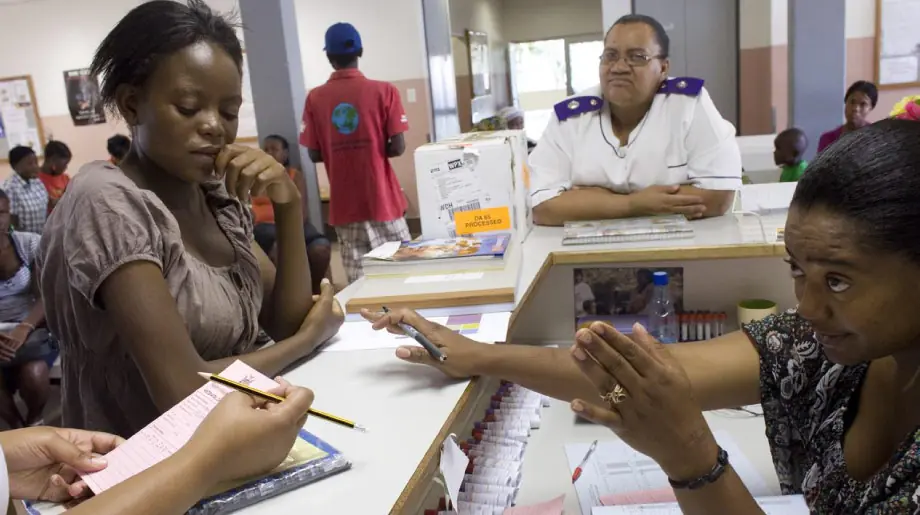Namibia has over 343 hospitals and clinics, as well as about 1,150 smaller service points.
The capital Windhoek has cardiac theatres at two different hospitals, the Windhoek Central State Hospital and the Roman Catholic Hospital. Both units were opened in 2010 and 2011, respectively, and have been used to perform open-heart surgery.
Recently the government commissioned the Lady Pohamba Private Hospital (LPPH) which is a state-of-the-art hospital that provides patient care through specialised staff and equipment. The hospital is situated in Kleine Kuppe in Windhoek.
The Hospital has a 24-hour 14-bed Trauma Unit, 6 Operating Theatres, 2 Surgical Wards (which include 41 beds), a 7-bed Gastrointestinal Unit, 10-bed Intensive Care and 11-bed High Care Unit, a 34-bed Medical Ward, 11-bed Paediatric Ward, 6-bed Neonatal Intensive Care Unit and a 12-bed Maternity Ward. Supportive services such as a Hospital Pharmacy, Radiology Department and Pathology Department are also available.
Since 1990, Namibia has shown a strong commitment to primary health care and achieved significant improvements in effective health coverage. Total health expenditure has increased from 6.2 percent of gross domestic product in the mid-1990s to 8.9 percent in 2014.
Even in the face of one of the highest rates of HIV in the world, Namibia achieved 90 percent coverage with antiretroviral therapy among eligible individuals in 2012. Health services in Namibia are provided through the public health sector (government) and the private sector, which comprises of profit and non-for-profit organisations.
The public system provides services to the majority of the population and is predominantly funded through general taxation while the private health care system, which provides either comprehensive or partial health care coverage, is funded largely through employee and employer contributions.
Public funds are the largest financier of curative care – inpatient and outpatient
According to the latest National Health Accounts (NHA) data series, approximately 50 percent of the health total health budget is awarded to MoHSS public and mission hospitals, health centres and clinics.
Only 4 percent of the budget is directed to Primary Health Care (PHC) programmes despite the Government’s commitment to the national PHC strategy. However, this low expenditure is an underestimation, as hospitals and health centres also undertake PHC activities.
The MoHSS allocates a budget to each regional management team and referral hospitals for provision of health care to a geographically defined population.
Some of the country’s major achievements, have been the restructuring and re-orientation of the health sector in line with the Primary Health Care (PHC) approach, which brought health services closer to the population, the highly successful roll-out of antiretroviral therapy (ART) from 2002, the stabilisation of HIV/AIDS prevalence rates- and the eradication of malaria, with Namibia now on track for elimination.
However, more is needed to bring the burden of these priority diseases to a level where they will not constitute a major public health problem in the country. In addition, non-communicable diseases (NCDs) are emerging as important causes of morbidity and mortality.
Although community-based survey data on NCDs is limited, health facility statistics indicate hypertension, diabetes and cancer as important health problems among adults.
According to the National Health Policy Framework 2010-2020, ‘Quality of care is and will be a pivotal dimension of all health services’.
Despite favourable consumer surveys, the MoHSS recognises that service quality must be improved at all levels, especially in primary health care, obstetric care and ambulance services.
The MOHSS is committed to improvements in these areas and is working on several reforms, such as: restructuring the MoHSS; systems integration; improved NHA; and implementing the Health Extension Workers Strategy.
